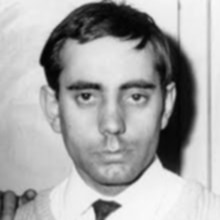
b: 1937
Lucien Léger
Summary
Name:
Lucien LégerNickname:
The StranglerYears Active:
1964Birth:
March 30, 1937Status:
DeceasedClass:
MurdererVictims:
1Method:
StrangulationNationality:
France
b: 1937
Lucien Léger
Summary: Murderer
Name:
Lucien LégerNickname:
The StranglerStatus:
DeceasedVictims:
1Method:
StrangulationNationality:
FranceBirth:
March 30, 1937Years Active:
1964Date Convicted:
May 7, 1966bio
Lucien Léger was born on March 30, 1937, in the 14th arrondissement of Paris, France. He grew up in a large family with seven children. His father worked as a metal turner at Renault, a well-known car manufacturer. After finishing his military service in Algeria, Léger married Solange, the sister of a friend from his regiment, in 1959.
Léger had different jobs throughout his life. He worked as a storekeeper at Éditions Denoël, a publishing house, before deciding to study nursing at a psychiatric hospital in Villejuif.
murder story
On May 26, 1964, 11-year-old Luc Taron went missing in Paris after being scolded by his mother for taking 15 francs. His parents believed he had run away and didn’t immediately report his disappearance to the police. However, the next morning, on May 27, 1964, a man named Jules Beudard found Luc’s body in the Bois de Verrières, a wooded area near Igny, about 25 kilometers from Paris. The boy had been suffocated and his body was mutilated.
That night, at 11:50 p.m., a man calling himself "The Strangler No. 1" phoned the Europe 1 radio station. He gave details about the murder and told them where to find a letter he had left on a car windshield. Over the next month, more than fifty anonymous letters signed by "The Strangler" were sent to newspapers, police, the victim’s father, and even the Minister of the Interior. The letters claimed responsibility for the murder and threatened more killings if a ransom wasn’t paid.
On June 27, 1964, Lucien Léger reported his Citroën 2CV car stolen. Just four days later, he told police he had found it, saying that "The Strangler" had called him and led him to the car. He also pointed out bloodstains inside. Shortly after, another letter from "The Strangler" claimed that the vehicle had been used in another crime. These unusual actions made police suspicious of Léger.
On July 5, 1964, investigators searched Léger’s hotel room. They found newspapers about the murder and a draft novel titled Diary of an Assassin. Handwriting analysis showed that Léger had written the anonymous letters. Police arrested him, and he quickly confessed to the crime. However, during a reconstruction of the crime in June 1965, he retracted his confession, claiming that an unknown man named "Monsieur Henri" had forced him to confess.
Léger’s trial began on May 3, 1966, in the Court of Assizes of Seine-et-Oise in Versailles. His defense argued that he was mentally unstable and obsessed with gaining attention. Despite these claims, the jury found him guilty. On May 7, 1966, he was sentenced to life in prison. Over the years, he became France’s longest-serving prisoner, spending 41 years behind bars. He requested parole multiple times, but it was always denied.
After decades in prison, Léger was finally released on October 3, 2005, at the age of 68. He lived quietly in Laon, where he died in July 2008.
Many people have since questioned whether Léger was actually guilty. Some journalists and authors believe he falsely confessed because he craved attention. In 2012, journalists Jean-Louis Ivani and Stéphane Troplain wrote a book questioning his conviction. In 2021, writer Philippe Jaenada’s book Au printemps des monstres also suggested that his trial may have been a miscarriage of justice.